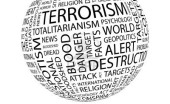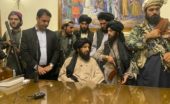Re Ian Bremmer 'Could third-party candidates upend the 2024 US election?' 3 April The current political movement in the USA…
President Obama and Afghanistan
Written by Diana Thebaud Nicholson // December 7, 2009 // Afghanistan, Foreign Policy, Geopolitics, Government & Governance, Middle East & Arab World, Rights & Social justice, Terrorism, U.S. // Comments Off on President Obama and Afghanistan
Text of President Obama’s speech
More on Afghanistan here and Afghanistan on Wednesday-night.com
Jeffrey Sachs: The Surrealism of the Afghan Surge
President Barack Obama risks leading the US deeper into the same kind of nightmare as Vietnam, with the same profound misconceptions and arrogance of the US military and the CIA. It just requires a glance at the picture on p. A29 of Sunday’s New York Times to see how absurd the US decision-making process really is. Among the people in the room briefing the president, there isn’t a single person with deep non-military knowledge of either Afghanistan or Pakistan. We see plenty of generals and politicians but nobody who knows about the people, culture, economy, climate, agronomy, extreme poverty, and traditions of the people themselves.
India-Pakistan relationship to determine Afghan success
Success for the Obama administration’s Afghanistan strategy rests in large part on easing tensions between India and Pakistan. Pakistan is uncomfortable with India’s growing influence in Afghanistan over fears it could be encircled by Indian interests, and has refused to act against Afghanistan Taliban on Pakistani soil as a counterweight. TIME (12/5)
2 December
Letter From Kabul: What the United States Must Overcome in Afghanistan Part I: Corruption, Part II: The Warlords, Part III: The Taliban (Foreign Affairs)
US may revise Afghan withdrawal date
The US has said that it may rethink its plan to begin withdrawing troops from Afghanistan by July 2011 if conditions on the ground prevent a security handover to the Afghan government. Pressed on Wednesday by Republicans sceptical about fixing a timeline for withdrawal, Robert Gates, defence secretary, said that the strategy unveiled by President Barack Obama on Tuesday was narrower than past US objectives for Afghanistan and achievable within the timespan the president had set out.
Obama Adds Troops, but Maps Exit Plan
(NYT) In his 33-minute address, he sought to convince an increasingly skeptical nation that the resurgence of the Taliban in Afghanistan and the continued existence of Al Qaeda across the border in Pakistan — what he called a “cancer” on the region — were direct threats to the United States, and that he could achieve the seemingly contradictory goals of expanding American involvement in the war even as he sought to bring it to a close.
US reacts to Obama’s Afghan plan
(Al Jazeera) The US president’s decision to send 30,000 more troops into Afghanistan has received a mixed reaction from American pundits in Washington.
The world reacts to Obama’s new plan
Europe welcomes Obama speech but few pledge troops
Obama’s Afghanistan speech: How it sounded to Afghans
(CSM) Obama’s Afghanistan speech set a timeline for withdrawal, but some Afghans worry that by sending more troops the US aims to occupy their country – a fear the Taliban may use to recruit fighters.
Obama failed to outline the way forward in Pakistan
(Foreign Policy AfPak channel) … this may be understandable — his main audience last night was the American public, and adding more details on the complex situation in Pakistan may have just served to further confuse what was already a complicated, overly triangulated speech trying to please multiple audiences. Yet on the other hand, the dearth of information about the next steps in Pakistan in a speech that was billed as the way forward in both Afghanistan and Pakistan is troublesome on its own merits — because the global security interests are much greater in Pakistan than they are in Afghanistan. We’ve all heard the list of interests in play in Pakistan — it has nuclear weapons, plays host to multiple terror networks, and it has more than five times as many people as Afghanistan.
The American president’s new plan for Afghanistan is roughly what the generals ordered
(The Economist) The speech was intended to convince both friends and enemies in Afghanistan that Mr Obama will not let the country fail. “If the Taliban think they can wait us out,” said a senior White House official, “they’re misjudging the president’s approach.” Meanwhile, to rally wavering support for the war at home, Mr Obama reminded Americans of the attacks of September 11th 2001 and raised the dreadful prospect of Pakistan’s nuclear weapons falling into terrorists’ hands.
Perhaps that will be enough. Mr Obama’s hawkish critics will continue to berate him for, as they see it, dithering and projecting an air of weakness that emboldens America’s enemies. Doves will continue to demand that he pull out straight away.
Congress will surely bankroll Mr Obama’s new strategy. Republicans will back it because they want to win the war, and even dovish Democrats will be reluctant to thwart a Democratic president. As a sop to the doves, Mr Obama insisted that America’s commitment to Afghanistan will not be open-ended, “because the nation that I am most interested in building is our own.”
(Times online) President Obama’s troop surge into Afghanistan is late but welcome.
Western domestic security does not require Afghanistan to become a happy Switzerland of the Hindu Kush (with minarets), but it does require stability of a sort that is presently far away. At last, President Obama appears to have learnt the lesson of the 2007 surge in Iraq. To get out, the US must first be prepared to get farther in.
Obama’s Plan and the Key Battleground
(Stratfor) U.S. President Barack Obama announced the broad structure of his Afghanistan strategy in a speech at West Point on Tuesday evening. The strategy had three core elements. First, he intends to maintain pressure on al Qaeda on the Afghan-Pakistani border and in other regions of the world. Second, he intends to blunt the Taliban offensive by sending an additional 30,000 American troops to Afghanistan, along with an unspecified number of NATO troops he hopes will join them. Third, he will use the space created by the counteroffensive against the Taliban and the resulting security in some regions of Afghanistan to train and build Afghan military forces and civilian structures to assume responsibility after the United States withdraws. Obama added that the U.S. withdrawal will begin in July 2011, but provided neither information on the magnitude of the withdrawal nor the date when the withdrawal would conclude. He made it clear that these will depend on the situation on the ground, adding that the U.S. commitment is finite.
In understanding this strategy, we must begin with an obvious but unstated point: The extra forces that will be deployed to Afghanistan are not expected to defeat the Taliban. Instead, their mission is to reverse the momentum of previous years and to create the circumstances under which an Afghan force can take over the mission. The U.S. presence is therefore a stopgap measure, not the ultimate solution. Read more »
(The Guardian) Obama is keen to shed the label of “war president” having already set a 2011 date for the withdrawal of US troops from Iraq. The sight of US troops leaving both Iraq and Afghanistan in large numbers could increase his chances of re-election. The risk for Obama is that the extra 30,000 troops may not be enough to counter an increasingly confident Taliban and that the timetable for training the Afghan army and police is overly optimistic.
Public opinion in the US is steadily turning against the war in the face of mounting American casualties and lack of faith in the government of President Hamid Karzai.
Obama, in a video conference, spoke to Karzai late on Monday night to brief him about the new strategy that will include targets for the Afghan government not only to train more members of the Afghan army and police but to take steps to tackle government corruption. More
Thomas Friedman: This I Believe
At a lunch on Tuesday for opinion writers, the president lucidly argued that opting for a surge now to help Afghans rebuild their army and state into something decent — to win the allegiance of the Afghan people — offered the only hope of creating an “inflection point,” a game changer, to bring long-term stability to that region. May it be so. What makes me wary about this plan is how many moving parts there are — Afghans, Pakistanis and NATO allies all have to behave forever differently for this to work.
Iraq was about “the war on terrorism.” The Afghanistan invasion, for me, was about the “war on terrorists.” To me, it was about getting bin Laden and depriving Al Qaeda of a sanctuary — period. I never thought we could make Afghanistan into Norway — and even if we did, it would not resonate beyond its borders the way Iraq might.
To now make Afghanistan part of the “war on terrorism” — i.e., another nation-building project — is not crazy. It is just too expensive, when balanced against our needs for nation-building in America, so that we will have the strength to play our broader global role. Hence, my desire to keep our presence in Afghanistan limited.
funding. The New York Times (12/8)
Factors outside Obama’s control to shape Afghanistan campaign
Whether U.S. President Barack Obama’s pledge to redouble the U.S. commitment to the war in Afghanistan finds eventual success will depend on a number of external factors — including cooperation from Afghan President Hamid Karzai, support from NATO allies and competence among Afghan’s security forces. In outlining a timetable for withdrawal, Obama has established criteria for success that will largely hinge on the Afghan government’s ability to root out endemic corruption and train security forces to fight a Taliban weakened by U.S. soldiers. Though NATO has pledged to support the mission with at least 5,000 more troops, most European leaders are wary to pledge any further blood and treasure to the unpopular war. The New York Times (12/1) , The Washington Post (12/2) , The Independent (London) (12/2)
30 November
Stratfor comments: This announcement is not only about the number of additional troops the White House will commit to Afghanistan: Far more important, it is about what the mission will be for those troops. The geopolitical stakes are high and the resulting impact will have ramifications far beyond the region. Full comment
“Talk of an exit strategy is exactly the wrong way to go. I certainly hope the president doesn’t do that because all that does is signal to the enemies and also to our allies, to the folks in Pakistan as well as the Afghanis, that we’re not there to stay until the mission is accomplished.”U.S. Sen. Jon Kyl, R-Ariz. Full story. Is it not also true that this signals to the regimes that the U.S. has been propping up that they have only limited time to ge their act together before an otherwise inevitable downfall?
Obama expected to pledge support for Pakistan, exit from Afghanistan
In a highly anticipated speech that will outline the direction of the ongoing conflict in Afghanistan, U.S. President Barack Obama is expected to outline a time line for the withdrawal of U.S. troops from the theater. Obama will announce the deployment of 30,000 more troops and how this force will assist in the transfer of security to Afghan forces. In a letter to Pakistan President Asif Ali Zardari, Obama explained the withdrawal will not come too early and that a more comprehensive bilateral relationship between the U.S. and Pakistan will help to ensure the conflict does not spread farther into Pakistan as it abates in Afghanistan. The New York Times (11/29) , The Washington Post (11/30)



